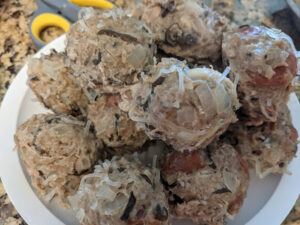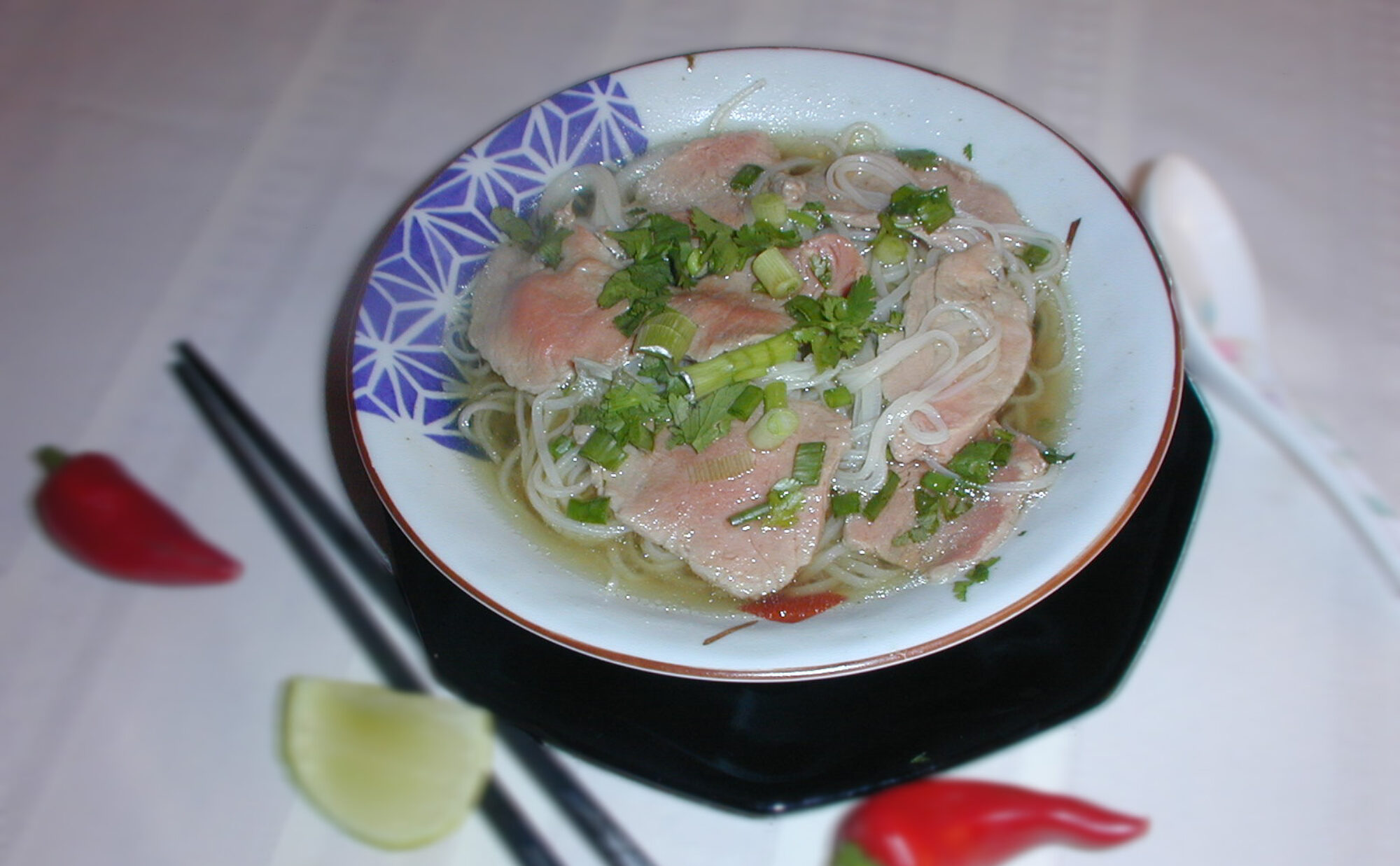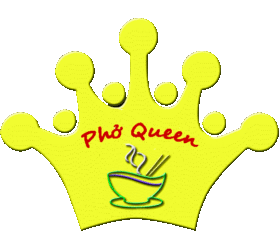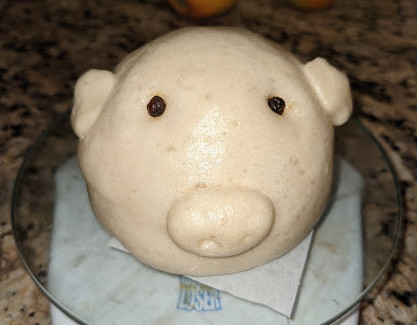In this article, we will be showing you how to make Vietnamese steamed buns called “Bánh Bao”. We will shape it into a little piggy. The regular steamed buns are often available at Vietnamese grocery stores or bakeries.
I extracted the recipe from a video on YouTube.com called “Bánh Bao – New York/combo bun” by Tien Hoang. This video is in Vietnamese. I translated and converted the recipe content into English. I modified the recipe to make it work for the piggy shape. The procedure is straightforward. I think the most lengthy process is when we divide the meat and the dough into even proportions. The best part is shaping the piggies.
This recipe was created solely for my demonstration for Orange County Libary System. When following the instructions, the steamed bun turned out perfectly each time when I made them. I decided to make this recipe available online to share with others. Please read through first before you start. I hope you find it useful and tasty.
As the owner of this website, I tracked down special deals for some products or services mentioned herein. As an Amazon Associate, I earn from qualifying purchases. When you use the link from this page to make a purchase, I may receive a small commission to support this website, and you may receive a great bargain – Full Disclosure.
Ingredients for the Filling
Meat filling (split into 16 even meat portion ~50g – 80g per)
- 16 quail eggs (trứng cút) or 4 large eggs (cut into 16 portions)
- 20 oz to 2 lbs ground meat (pork, chicken, or turkey)
- 1 oz or a handful of fungus mushrooms (nấm mèo)
- 2 oz or 1 small section of clear or glass noodles
- ½ onion
- 4 Chinese/Vietnamese Sausages (lạp xưởng)
- 1.5 tsp salt
- 2 tsp sugar
- 1 tsp black pepper
Ingredients for the Dough
- 4 cups all-purpose flour (Red Lotus All-Purpose)
- 1 cup tapioca starch (bột năng)
- ½ cup sugar
- 1 tsp salt
- 4 tbsp Cisco shortening
- 2.5 tsp yeast (fast-acting)
- 2.5 tsp baking powder (double acting)
- ¾ cup fresh milk (room temperature)
- 260 – 280 ml cup (1 to 1 ¼ cups) of room temperature water
Split into 16 portions (~80g per) + 1 portion (40 – 60g, leftover flour)
Prepare the Filling
Boil the eggs. Once cooked, allow them to cool immediately in cold water for easier peeling. You can use quail eggs or regular eggs. For the regular eggs, I used a piece of thread to cut an egg into quarters instead of the knife.
Either egg will work well. Quail eggs are cuter. Soak the clear noodles and the fungus in warm water for 10 to 15 minutes.
For the Chinese sausages, the following instruction is optional. Fill a small saucepan with 3 to 4 cups of water. Bring it to a boil. Add the sausages to the boiling water. Allow them to cook for 5 minutes or until the sausages float up. Remove them and empty the saucepan. With the same saucepan, pan-fried the sausages. You do not need to add any oil. There should be enough oil excreting from the sausages. Flip them back and forth to get them slightly golden. Remove the sausages. Slice them into thin slices.
The boiling process cleans out the dye in the Chinese sausages if any. The pan-fried process firms up the skin and make the sausages crispy and crunchy. If you are not doing the boiling and pan-frying, then slice the sausages into thin slices. Dice the onion.
Combine ground meat mushrooms, diced onion, sausages, salt, sugar, and pepper. Mix well. Knead the meat mixture and split it into 16 portions. Roll them into balls and add 1 egg into the center of each meat. (Make approximately 50g to 80g per ball depending on how much ground meat you use.)
Place the meatball fillings in a pie dish so you can steam them in a steamer. Steam for 20 minutes or until the meat is almost done. After the meatballs are done, remove the meatballs from the steamer and the juice. Allow them to cool completely.

Make the Dough
While the meat is steaming, we can prepare the dough. Mix the flour, tapioca starch, sugar, salt, shortening, yeast, baking powder, and milk. If you have an electric dough mixer that would definitely make things easier and faster. Mix at a low level to start. Do not add all the water to the ingredients all at once. Add a little at a time to make sure the dough will not be too wet.
Slowly increasing the level to 4. Continue to mix until the flour clump together smoothly and feel elasticity. It should not be sticking to your hand. Split the dough into 16 portions of 80g. You should have about 40 to 60 g of dough leftover. Roll the flour portions into smooth round balls. You can use the loose flour to help with the stickiness.
Divide the left-over flour into 16 small balls. We will use these extra balls to make the snout and the ears. We will use the peppercorn for the eyes. Cut wax paper into 16 (2×2 or 3×3 inch) squares. We will place the wax paper under each bun.
Forming the Piggies
Flatten out the ball of dough and place the meatball in the center. Gently wrap the dough over the meatball. Cover it completely and round it out in the palm of your hand. Place it on the wax paper. Split the small extra dough into 3 portions. Two portions will be similar and the third portion will be slightly bigger. The bigger portion is the snout. Find a good location on the stuffed dough for the nose. Use a toothpick to stick the small dough to the stuffed dough. 
Flatten out the two small extra dough. They will be used as ears. Place them where you would like the ears to be. Add the peppercorn eyes. You now have something that looks like a face of a pig. Repeat the same process for 15 more buns.
Once completed, place the piggies in the steamer. Bring the water to a boil and then add the layers that contain the bánh bao. Place a cloth or towel that can cover the steamer. Close the lid. This will prevent the condensation of water from dripping on the buns. Cook for 15 minutes. Remove steamed buns and allow them to cool.
Keep them refrigerated once they cool down. The piggies will keep for one week. You can also wrap and freeze the buns to keep for a month or more. To reheat, you can steam them for 15 minutes or place them in a microwave for 30 to 40 seconds.
Conclusion
This batch should yield approximately 16 piggy buns. For the filling, you can make it meatier or less. I prefer not too much meat. I would lean toward 1 pound of meat instead of 2. The mushrooms and clear noodles can be optional as well. You can add other ingredients such as jicama or Shiitake mushrooms or substitute them. The filling is flexible.
For the flour, there is “bánh bao” flour available. It is already mixed flour so it should be simpler.  We can find this type of flour in Vietnamese grocery stores.
We can find this type of flour in Vietnamese grocery stores.
Do not use bread flour. I ran out of all-purpose and needed 3/4 cup more. The only flour I had available was bread flour. I found out the hard way. It did not work as well. The texture and flavor were different. It became more bready. All-purpose flour works best. The Red Lotus flour was recommended for a whiter color. Personally, I am OK with any all-purpose flour.
The buns are great for breakfast or a quick snack. If there are any questions, please feel free to leave me a comment below. I would love to hear how the recipe works out for you. Enjoy!







